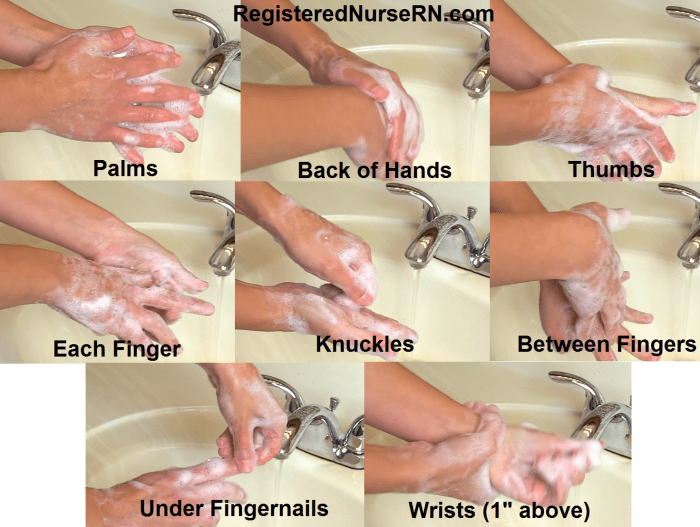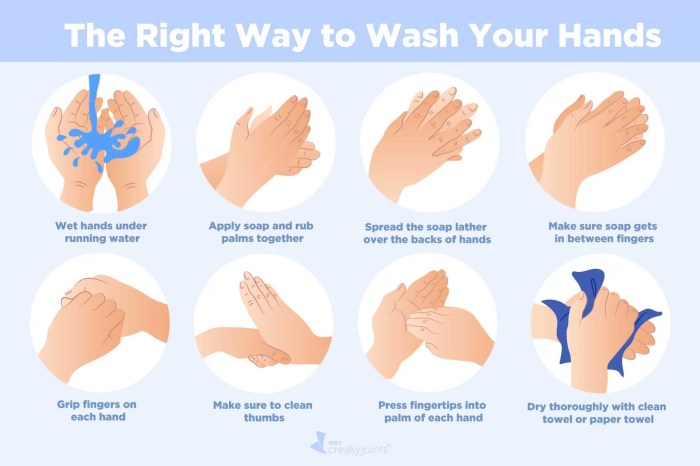How can food handlers control the potential for cross contamination? This question is of paramount importance in ensuring food safety and preventing foodborne illnesses. Cross-contamination occurs when harmful bacteria, viruses, or allergens are transferred from one food to another, posing a significant threat to public health.
Food handlers play a crucial role in preventing cross-contamination by adhering to proper food safety practices.
Understanding the different types of cross-contamination and implementing effective control measures are essential for food handlers. This article will delve into the various methods food handlers can employ to minimize the risk of cross-contamination, ensuring the safety of food and protecting consumers from potential health hazards.
Understanding Cross-Contamination in Food Handling
Cross-contamination occurs when harmful substances, such as bacteria, viruses, or allergens, are transferred from one food to another. It is a significant food safety hazard that can cause foodborne illnesses and allergic reactions. Cross-contamination can occur through various means, including:
- Physical contamination: Direct contact between contaminated food and uncontaminated food, such as transferring bacteria from raw meat to cooked vegetables.
- Chemical contamination: Contact between food and harmful chemicals, such as pesticides or cleaning agents, leading to contamination.
- Biological contamination: Transfer of microorganisms, such as bacteria or viruses, from one food to another, causing spoilage or foodborne illnesses.
Methods to Prevent Cross-Contamination

Effective prevention of cross-contamination requires implementing strict food handling practices. Key methods include:
- Proper hand hygiene practices:Frequent handwashing with soap and water is crucial to prevent the spread of microorganisms.
- Effective cleaning and sanitizing of surfaces and equipment:Regular cleaning and sanitizing of food contact surfaces, utensils, and equipment helps eliminate potential contaminants.
- Segregation of raw and cooked foods:Separating raw and cooked foods during storage, preparation, and cooking prevents cross-contamination.
- Use of separate utensils and work areas for different food items:Using dedicated utensils and work areas for different food items minimizes the risk of transferring contaminants.
Control Measures for Specific Foodborne Hazards, How can food handlers control the potential for cross contamination
Preventing cross-contamination is essential for controlling specific foodborne hazards, such as:
- Bacteria (e.g., Salmonella, E. coli):Proper cooking temperatures, avoiding cross-contamination during preparation, and practicing good hand hygiene are crucial for preventing bacterial contamination.
- Viruses (e.g., norovirus, hepatitis A):Frequent handwashing, proper cleaning and disinfection of surfaces, and avoiding contact with contaminated individuals are key measures to control viral cross-contamination.
- Allergens (e.g., gluten, peanuts):Strict segregation of allergen-containing foods, clear labeling, and thorough cleaning of surfaces and equipment are essential to prevent allergic reactions due to cross-contamination.
Training and Education for Food Handlers
Educating food handlers on cross-contamination risks and prevention methods is paramount. Effective training programs should:
- Emphasize the importance of food safety and the consequences of cross-contamination.
- Provide detailed instructions on proper food handling practices, including hand hygiene, cleaning, and segregation.
- Incorporate hands-on training and demonstrations to reinforce learning.
- Offer certification programs to demonstrate competence in cross-contamination control.
Monitoring and Enforcement: How Can Food Handlers Control The Potential For Cross Contamination

Establishing effective monitoring systems is crucial to detect and address cross-contamination incidents. This includes:
- Regular inspections to ensure compliance with cross-contamination prevention measures.
- Developing and implementing enforcement actions to address violations.
- Establishing monitoring systems to detect cross-contamination incidents.
Best Practices for Food Safety Management

Implementing comprehensive food safety management systems is essential for preventing cross-contamination. Key practices include:
- Design and implement HACCP plans:Identifying and controlling cross-contamination hazards through Hazard Analysis and Critical Control Points (HACCP) plans.
- Establish and maintain food safety culture:Fostering a culture of food safety awareness and responsibility among employees.
- Promote continuous improvement and innovation:Regularly reviewing and updating cross-contamination prevention measures to enhance food safety.
FAQ
What are the most common types of cross-contamination?
The most common types of cross-contamination are physical, chemical, and biological. Physical cross-contamination occurs when foreign objects, such as hair or dirt, are transferred from one food to another. Chemical cross-contamination occurs when harmful chemicals, such as cleaning agents or pesticides, come into contact with food.
Biological cross-contamination occurs when bacteria, viruses, or parasites are transferred from one food to another.
What are the most effective ways to prevent cross-contamination?
The most effective ways to prevent cross-contamination include proper hand hygiene, effective cleaning and sanitizing of surfaces and equipment, segregation of raw and cooked foods, and the use of separate utensils and work areas for different food items.
What are the consequences of cross-contamination?
Cross-contamination can lead to foodborne illnesses, which can cause a range of symptoms, including nausea, vomiting, diarrhea, and abdominal pain. In severe cases, foodborne illnesses can be life-threatening.